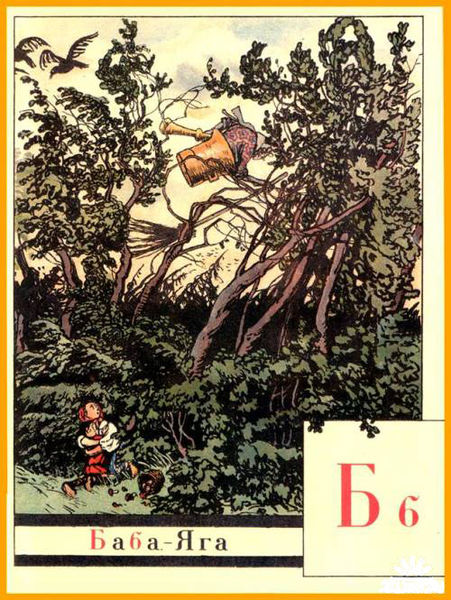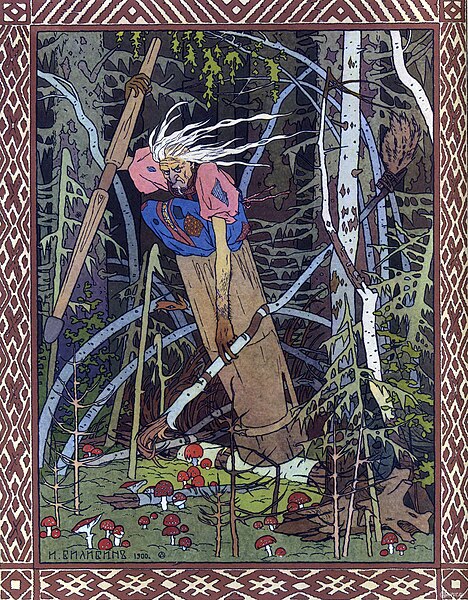Baba Yaga is an enigmatic or ambiguous character from Slavic folklore who has two opposite roles. In some motifs she is described as a repulsive or ferocious-looking old woman who fries and eats children, while in others she is a nice old woman, who helps out the hero. She is often associated with forest wildlife. Her distinctive traits are flying around in a mortar, wielding a pestle, and dwelling deep in the forest in a hut standing on chicken legs.
Baba Yaga depicted in Tales of the Russian People (published by V. A. Gatsuk in Moscow in 1894)
Baba Yaga being used as an example for the Cyrillic letter Б, in Alexandre Benois' ABC-Book
Baba Yaga and her hut, by Ivan Bilibin
Baba Yaga by Ivan Bilibin, in Vasilisa the Beautiful, 1900
A mortar and pestle is a set of two simple tools used to prepare ingredients or substances by crushing and grinding them into a fine paste or powder in the kitchen, laboratory, and pharmacy. The mortar is characteristically a bowl, typically made of hardwood, metal, ceramic, or hard stone such as granite. The pestle is a blunt, club-shaped object. The substance to be ground, which may be wet or dry, is placed in the mortar where the pestle is pounded, pressed, or rotated into the substance until the desired texture is achieved.
Kitchen mortar with pestle inside
Guinean women stamping into a large mortar
Stone Age stone mortar and pestle, Kebaran culture, 22000–18000 BC
Rock mortars in Raqefet Cave, Israel, used for making beer during the Stone Age








